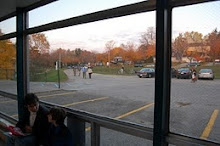The houses may be too radical for those who treasure an experience like drinking hot chocolate in a cold kitchen.I personally would miss those experiences. For me, the cost of natural gas is the way to rationalize keeping the house as cool as I like it.
The main idea behind the passive house is to minimize heat escaping from the house while still maintaining a flow of fresh air from outside. This is done by sinking heat from air being blown out of the house to a air being pulled into the house.
 There must be limits to the temperature of air this would work on. If you want the temperature inside to be 70˚F [21˚C] while it’s -10˚F [-23˚C] outside, unless the heatsink is ideal, the air coming in will be much cooler than the air going out. The article says the system deals with this using a heating element that uses no more power than a hairdryer. A hairdryer running 24/7 for a month, however, would use well over $100 worth of electricity. Keeping a passive heating system cost efficient depends on not using the heating element too much.
There must be limits to the temperature of air this would work on. If you want the temperature inside to be 70˚F [21˚C] while it’s -10˚F [-23˚C] outside, unless the heatsink is ideal, the air coming in will be much cooler than the air going out. The article says the system deals with this using a heating element that uses no more power than a hairdryer. A hairdryer running 24/7 for a month, however, would use well over $100 worth of electricity. Keeping a passive heating system cost efficient depends on not using the heating element too much.Another problem with this system would be if for some reason you opened the doors in winter and let the house get below freezing. The house is good at not losing heat, but there’s no system to add large amounts of heat if necessary. This really isn’t an objection because I’ve never heard of someone opening the doors and windows in the dead of winter till their house freezes.
At least some elements of a passive house will find their way into mainstream construction. People will learn to accept their foibles just as people accept the need for a CO detector with natural gas heating. We should incorporate passive heating principles into all building design now before oil and natural gas get very expensive.


No comments:
Post a Comment